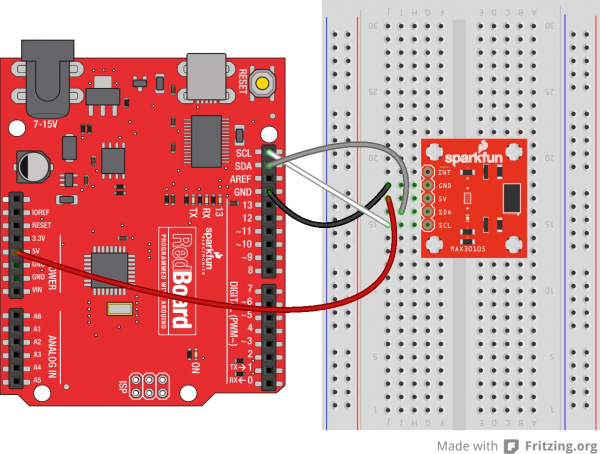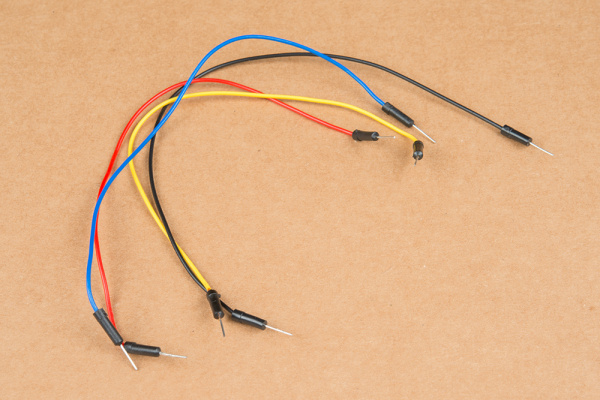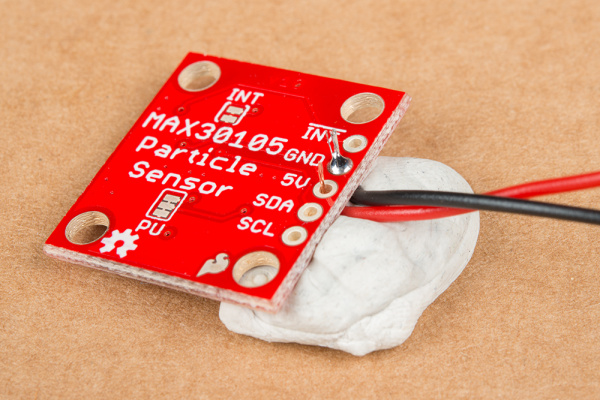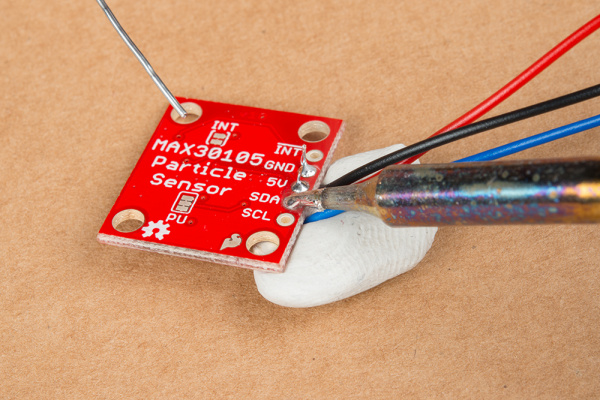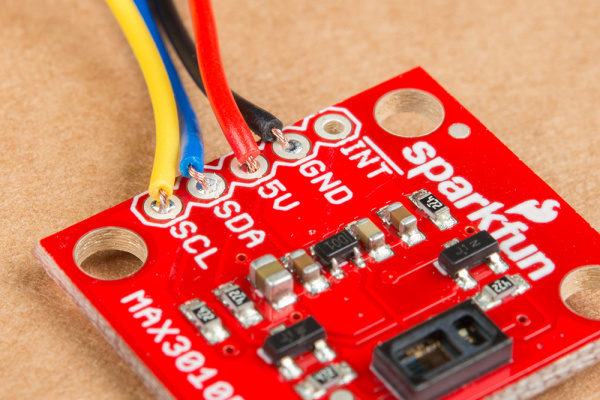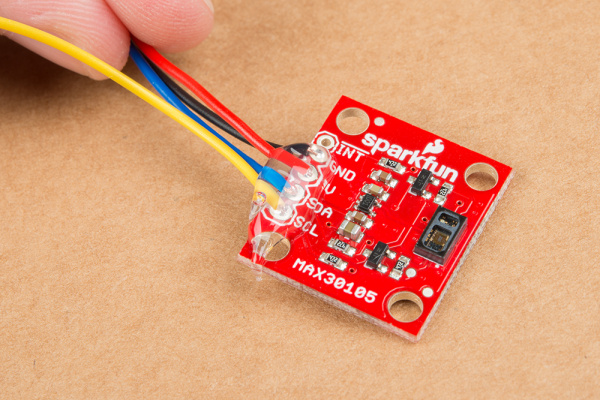MAX30105 Particle and Pulse Ox Sensor Hookup Guide
Hardware Hookup
Because this sensor can be used in a multitude of ways, consider how you're going to use the MAX30105 before soldering. If you plan to use the sensor for pulse oximetry, we recommend soldering short wires to the board to enable some movement when the sensor is attached to a finger. If you're more interested in static sensing like particle or air monitoring, consider soldering male headers to the board.
Here's an example of using jumper wires to make a robust connection to the MAX30105 board.
These jumper wires contain stranded wire, which make them more flexible and less prone to breaking from repeated movement.
Pick four different color wires, and cut them to your desired length. We use red, black, yellow and blue to make things easy to identify.
Strip the ends of the wire, and solder them into their various spots. A connection to the INT pin is optional and not needed for the Arduino examples below.
Getting small gauge wires to stay in place can be tough. I like to use sticky tack to hold everything in place while I solder.
You can pick any colors you want, but using different colors for each pin will make it easier to distinguish between connections.
Stranded wire is better at flexing than solid core wire. However, without stress relief, even these stranded wires may break due to lots of flexing.
Adding a bit of hot-glue where the wires meet the PCB will make the board even more robust and resistant to damage when you start "speaking" with your hands.
